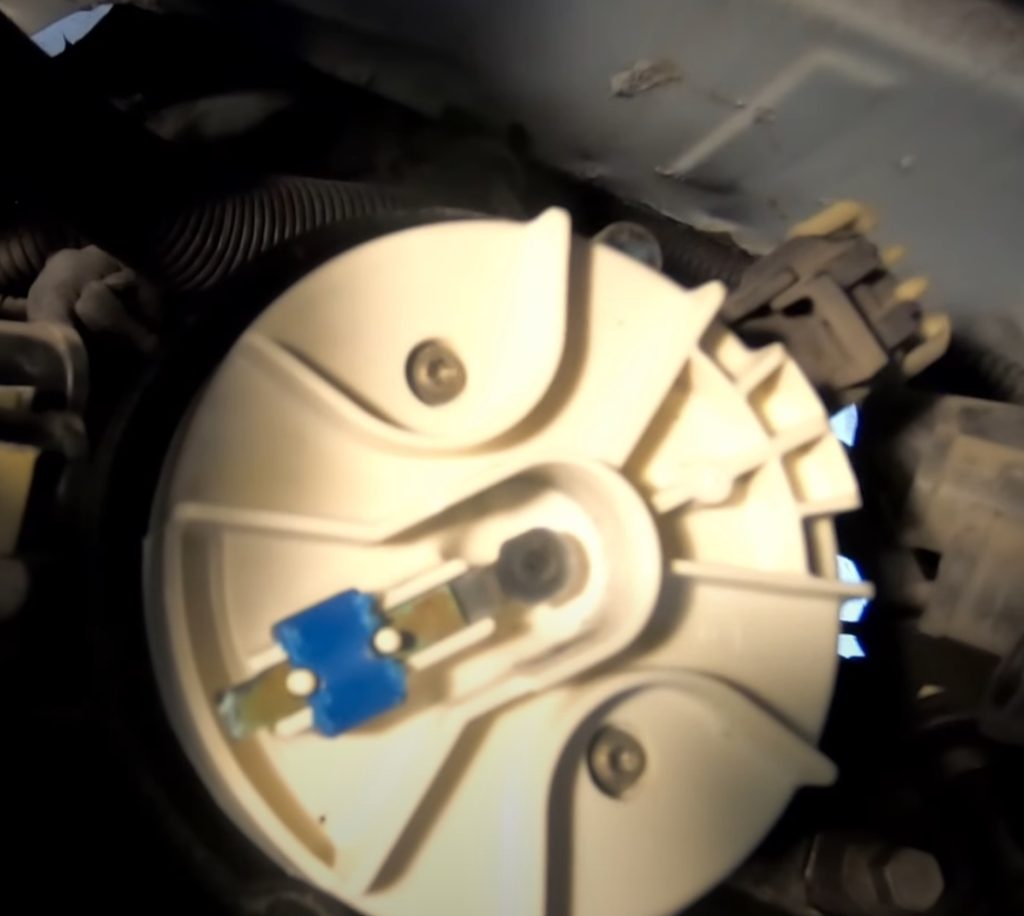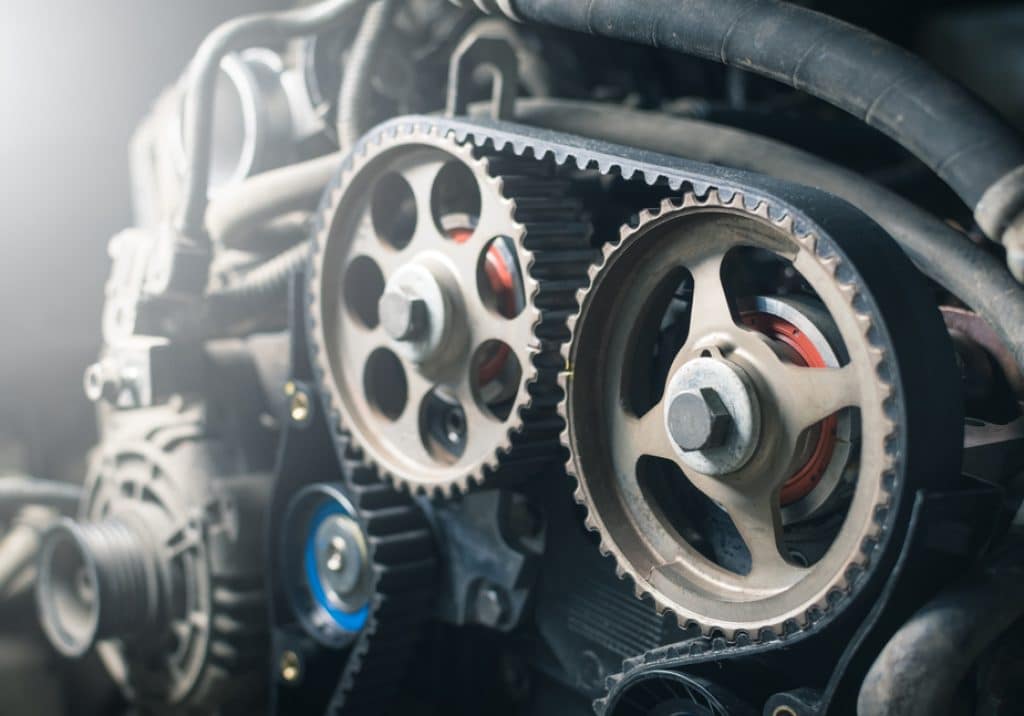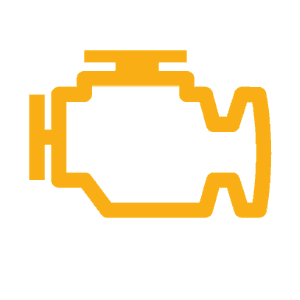Ever wondered why your check engine light is glaring at you like an angry traffic cop? It might be the P0011 code throwing a wrench in your engine’s smooth operation. This pesky little code is your car’s way of saying, “Hey, my camshaft’s timing is off!”

The P0011 code indicates that the intake camshaft on bank 1 (the side with cylinder #1) is more advanced than your car’s computer wants it to be. It’s like your engine is trying to run a marathon before it’s warmed up properly. This can lead to all sorts of performance issues, from poor fuel economy to that annoying rattling sound under your hood.
Don’t worry, though! While it might sound like your car is speaking in code, we’re here to decrypt it for you. We’ll walk you through what this code means, why it’s happening, and what you can do about it.
By the end of this article, you’ll be equipped to tackle this issue head-on, or at least sound smart when you talk to your mechanic.
Key Takeaways
- P0011 indicates an over-advanced camshaft timing issue on bank 1
- Symptoms can include poor engine performance and decreased fuel efficiency
- Regular maintenance and prompt attention to warning signs can prevent major issues
Understanding Code P0011
The P0011 code relates to camshaft timing issues that can significantly impact your engine’s performance.
What is P0011 Code?

P0011 is a diagnostic trouble code that indicates your engine’s “A” camshaft position is over-advanced or the system performance is off on Bank 1. In simpler terms, your engine’s brain (the ECU) thinks the camshaft isn’t where it should be.
Think of it like your car is trying to do the cha-cha, but one of its legs is moving too fast. Not a pretty sight, right? This timing mismatch can lead to poor engine performance, reduced fuel efficiency, and even that dreaded Check Engine light glowing on your dashboard.
The Role of Camshaft Timing
Camshaft timing is like the conductor of your engine’s orchestra. It ensures all the parts are playing in harmony.
The camshaft controls the opening and closing of the engine’s valves, which is crucial for the intake and exhaust processes.
When the timing is off, it’s like your engine is trying to breathe through a straw while running a marathon. Not fun! Proper timing ensures your engine gets the right amount of air and fuel at the right time, leading to optimal performance and fuel economy.
Many modern engines use variable valve timing (VVT) to adjust camshaft timing on the fly. When VVT isn’t working correctly, you might see the P0011 code pop up.
Symptoms of P0011

When your car’s camshaft timing goes haywire, you’ll notice some telltale signs. Your trusty vehicle might start acting up in ways that’ll make you scratch your head and reach for your wallet.
Check Engine Light Tales
You’re cruising down the road when suddenly, that pesky check engine light on your dashboard decides to throw a party. It’s like your car’s way of saying, “Hey buddy, we need to talk!”
This illuminated beacon is often the first hint that your P0011 code is making its presence known. It’s your vehicle’s SOS signal, begging you to pay attention to its timing woes.
Don’t ignore this glowing invitation to investigate further. Your car might be trying to save you from a world of trouble down the road.
Performance Issues and Stalling
Ever feel like your car’s having a bad day? With P0011, you might notice your engine’s performance taking a nosedive. It’s like your car suddenly forgot how to, well, car.
You might experience:
- Rough idling (your car shaking like it’s cold)
- Engine misfires (it’s not you, it’s the timing)
- Poor acceleration (0 to 60 in… eventually)
- Reduced fuel efficiency (your wallet will feel this one)
In severe cases, your car might even stall out completely. It’s like it’s throwing a tantrum in the middle of traffic. Not fun, especially when you’re trying to impress your date or make it to that important meeting on time.
Sounds of Discontent
Your car might start making some interesting noises. Think of it as your engine’s way of complaining about its timing issues.
You might hear:
- Rattling noises from the engine bay
- Ticking sounds that get louder as you accelerate
- A general grumbling from under the hood
These sounds are your car’s way of saying, “Hey, something’s not right in here!” It’s like your engine is clearing its throat, trying to get your attention.
Don’t ignore these automotive cries for help. Your car’s trying to tell you something, and it’s probably saying, “Take me to a mechanic before things get worse!”
Diagnosing the Trouble Code

Buckle up, gear heads! We’re about to dive into the nitty-gritty of cracking the P0011 code. Get ready to put on your detective hat and follow the oil-stained trail to victory.
Initial Inspection
First things first, pop that hood and take a gander. Your check engine light is probably lit up like a Christmas tree, but don’t panic just yet.
Give your engine a once-over. Look for any obvious signs of trouble, like oil leaks or loose connections. These could be your smoking gun.
Next, check your oil level and condition. Low or dirty oil can wreak havoc on your camshaft timing. If it looks like tar, it’s time for a change, pronto!
The Diagnostic Process
Now, let’s get down to brass tacks.
Grab your trusty OBD-II scanner and plug it in. This little gadget is your best friend when it comes to diagnosing the P0011 code.
Run a scan and take note of any other codes that pop up. They might be accomplices in this automotive crime.
Pay close attention to the freeze frame data. It’s like a snapshot of your engine’s vital signs at the moment the code was triggered.
Time to test the oil control valve and camshaft position sensor. These components are often the culprits behind the P0011 code.
Common Mistakes to Avoid
Hold your horses! Before you start throwing parts at the problem, take a breath.
Many folks make the mistake of replacing the camshaft sensor right off the bat.
Don’t ignore the basics. A simple oil change might just do the trick. Skipping this step could leave you with egg on your face (and an empty wallet).
Remember, your PCM or ECM could be the real troublemaker. These brainy boxes control your engine’s timing, so don’t rule them out.
Lastly, don’t forget to clear the codes and retest after each repair. You don’t want to be chasing your tail, do you?
Possible Causes and Solutions

Tracking Down the Culprits
Your engine’s timing is off, and it’s time to play detective.
The usual suspects include a faulty camshaft oil control valve, which controls oil flow to the camshaft. If it’s stuck open, your timing goes haywire.
Check your oil viscosity too. If it’s thicker than a milkshake, it can’t flow properly, messing up your camshaft timing. Low oil pressure is another troublemaker – it’s like trying to run a marathon without breakfast.
Don’t forget about your timing chain. If it’s stretched out like an old rubber band, it can throw off your engine’s rhythm. And while you’re at it, take a peek at your camshaft position sensor. If it’s on the fritz, it might be feeding your car’s computer some tall tales.
Fixes to Get Back on Track
Time to roll up your sleeves and get that engine purring again.
Start with the basics – change your oil and filter. It’s like giving your engine a spa day.
Next, grab your trusty OBD-II scanner and clear those codes. Take your car for a spin and see if the code comes back. If it does, you might need to replace that camshaft oil control valve.
If your timing chain is looser than your Uncle Bob’s jokes at Thanksgiving, it’s time for a replacement. And don’t forget to check your camshaft position sensor – a new one might be just what the doctor ordered.
Still stumped? It might be time to call in the cavalry (aka a professional mechanic). They’ve got the tools and know-how to tackle even the trickiest timing troubles.
Prevention and Maintenance
Keeping your engine in tip-top shape can save you from the dreaded P0011 code. Regular maintenance is key, and it’s not as daunting as you might think. Let’s dive into some simple steps you can take to keep your camshaft happy and your engine purring.
Regular Check-Ups
You know how you dread going to the doctor? Well, your car feels the same way about the mechanic. But trust me, it’s for their own good.
Schedule regular check-ups for your vehicle, focusing on the camshaft and timing system.
Have a pro look at the camshaft position sensor, timing chain, and VVT solenoid. These little guys can cause big trouble if they’re not playing nice.
Don’t forget to keep an eye on your engine oil level. Low oil can make your camshaft throw a fit faster than a toddler at bedtime.
Check it regularly, and top it off when needed. Your engine will thank you with smooth, quiet operation.
The Role of Oil Changes
Ah, the humble oil change. It’s like a spa day for your engine, and it’s crucial for preventing the P0011 code.
Regular oil and filter changes keep your engine’s internals clean and lubricated. This is especially important for the camshaft and oil control solenoid.
Use the right type of oil for your vehicle. It’s like picking the perfect outfit – it needs to fit just right.
The wrong oil can mess with your engine’s timing faster than you can say “P0011.” And here’s a bonus: proper oil maintenance can improve your fuel economy. Who doesn’t love saving a few bucks at the pump?
Frequently Asked Questions
The P0011 code can be a tricky beast to tackle. Let’s dive into some common questions you might have about this pesky engine issue. From symptoms to solutions, we’ll cover the bases to help you get back on the road.
How do I correct the P0011 error code in my vehicle?
Start by checking your engine oil. If it’s low or dirty, a simple oil change might do the trick.
Next, clear the codes and see if they return.
If that doesn’t work, you might need to replace the camshaft actuator or oil control valve.
These parts can be finnicky, so don’t be afraid to call in a pro if you’re not comfortable poking around under the hood.
Is it safe to continue driving if my car’s showing a P0011 code?
It’s not ideal, but you’re not likely to explode into a fireball. The P0011 code indicates that your engine’s timing is off, which can affect performance and fuel economy.
Short trips might be okay, but prolonged driving could lead to more severe engine damage. It’s best to get it checked out sooner rather than later. Your wallet (and your engine) will thank you.
What are the typical symptoms indicating a P0011 code has been triggered?
You might notice your engine running rough or stalling.
Poor fuel economy is another telltale sign – if you’re suddenly burning through gas like it’s going out of style, P0011 could be the culprit.
Other symptoms include decreased engine performance and that dreaded Check Engine light glowing on your dashboard. If your car starts sounding like an angry lawnmower, it’s time to investigate.
Could an oil change be the reason behind my car displaying a P0011 code?
Believe it or not, an oil change could be the hero or villain in this story.
Using the wrong type of oil or not filling it to the correct level can trigger a P0011 code.
Make sure you’re using the right viscosity oil for your vehicle. Too thick, and it can’t flow properly. Too thin, and it won’t provide enough protection. It’s like Goldilocks – you need it just right.
What leads to a camshaft timing being categorized as ‘over-advanced’ in bank 1?
‘Over-advanced’ timing means your camshaft is opening the valves earlier than it should.
This can happen due to a faulty oil control valve or a worn timing chain.
Sometimes, it’s as simple as low oil pressure not providing enough oomph to control the camshaft actuator. It’s like trying to blow up a balloon with a pinhole in it – frustrating and ineffective.
How much will it usually cost me to get a P0011 code issue resolved?
The cost can vary wildly depending on the root cause.
If you’re lucky, a simple oil change might fix it for under $100.
On the other end of the spectrum, if you need to replace the camshaft actuator or timing chain, you could be looking at $500 to $1,500 or more.
It’s like playing automotive roulette – you never know where the ball will land until you dig in.
